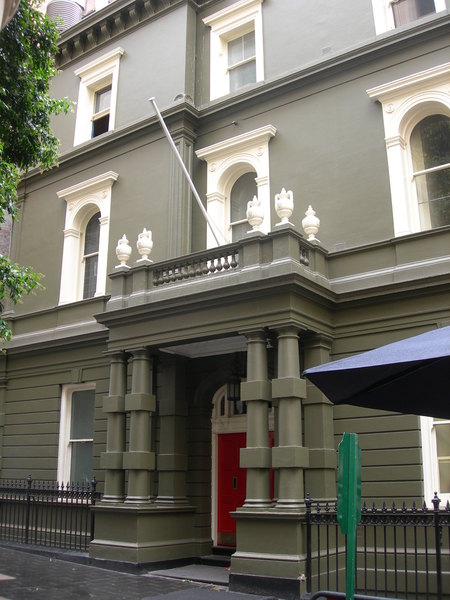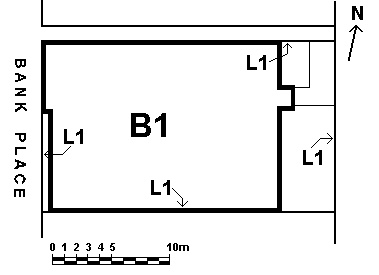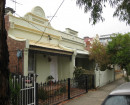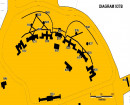MELBOURNE SAVAGE CLUB
12-16 BANK PLACE MELBOURNE, MELBOURNE CITY
-
Add to tour
You must log in to do that.
-
Share
-
Shortlist place
You must log in to do that.
- Download report




Statement of Significance
What is significant?
On 9 May 1894 a group of 18 professional musicians, amateur players and music lovers from professions gathered at the Cafe Continental in the Block Arcade to discuss forming a new club. Ten days later the club was formally called the Melbourne Savage Club, with 72 club members elected. They adopted a constitution based on that of the London Savage Club and leased rooms in the Block Arcade. In the early years music was the heart and soul of the Melbourne Savage Club and the club quickly became the central gathering place of those Melburnians whose passion was music, both professional and gifted amateurs. In 1894 annual subscription to the club was a reasonable one guinea and the entrance fee was also cheap with members of the dramatic and musical professions exempt, thus encouraging a core of artistic members. In July 1894 the musical committee organised the first of the club's hundreds of smoke nights to which many of Melbourne's actors, musicians, soldiers and sailors were invited to enjoy a varied programme of entertainment by its members. These smoke nights were used to assist in the recruitment of new members. The club over its years as well as music lovers has attracted many artists and literary figures. Since at least the 1930s the Savage Club clubhouse has been used as a dining venue for the T-Square Club. The T-Square Club is a dining club for artists and architects who meet for lunch at the Savage Club about every two months. At times during its history almost all T-Square members were also Savages, so that it was almost a club within a club.
The building, which the Melbourne Savage Club occupies, was constructed in Bank Place in 1884-85 for the Imperial Insurance Company. The architects were A.L.Smith and A.E.Johnson, and the builders were William Morton and John Peacock. It was originally a much larger, symmetrical building, which also occupied the adjoining allotment to the south. Known as Imperial Chambers, both sides of the building had identical entrance porticos and were listed separately in Melbourne directories. By 1905 the section to the south would appear to have been demolished and new industrial-like premises were built for the printing firm, Charles Troedel and Company. They remained at these premises until the early 1930s, and in 1933 the building was remodelled by architects Anketell and K Henderson and renamed Charter House.
The Imperial Insurance Company sold the property to the National Mutual Life Company in 1903. Sir Rupert Clarke moved into the building in 1910 and purchased it in 1913 as the home, so club legend has it, of his mistress. In 1923 the Savage Club purchased the property from Clarke. Previously they had leased rooms in the Block Arcade and the Victoria building in Queens Walk. When the Savages took possession in 1923 the ground floor and basement were sub-let as offices. Extensive alterations were undertaken to provide for a two-table billiard room on the first floor and a large social room on the second floor. The architects for this work were club members J.J. Meagher and Percy Meldrum. In 1925 the club took over the ground floor offices for club purposes. Architect Kingsley Henderson, a member of the club drew up the plans for work to this floor, which cost a considerable .5000. The Punkahs in the dining room also date from this period, being installed in 1927 at a cost of .100. The Yorick Club amalgamated with the Savage Club in 1966. Marcus Clarke had formed the Yorick Club in 1868 for writers and journalists.
How is it significant?
The Melbourne Savage Club is of social, historical and architectural significance to the State of Victoria.
Why is it significant?
The building at 12 Bank Place is of social and historical significance for its association with pastoralist and entrepreneur Sir Rupert Clarke who owned the property from 1913-1923 and resided in it three years prior to purchasing it. The Clubhouse is of social and historical importance for its associations with the Melbourne Savage Club who have occupied the building since 1923. The Melbourne Savage Club, established in 1894 is important as a surviving bohemian club, which has included amongst its members many outstanding Australians. Artists Fred McCubbin, Tom Roberts and Arthur Streeton from the Heidelberg School were members of the Savage Club, as well as political figures W.M. (Billy) Hughes, Sir Robert Menzies and Joseph Lyons. The Melbourne Savage Club is of social and historical importance for its associations with the Yorick Club and the T-Square Club both of which brought a variety of members together from artistic professions. For 98 years the Yorick, which was established for journalists and writers, had played a significant role in Melbourne's social and cultural life and in 1966 it amalgamated with the Yorick Club. The contribution of the combined clubs to the artistic, literary and social development of Victoria is of great importance.
The Melbourne Savage Club is of architectural significance as an excellent intact example of a townhouse, although half of the original building was demolished. The interior of the club is significant for reflecting the ideals of the Melbourne Savage Club. Of particular interest are the staircase, the impressive ground floor social room with stage and grand fireplaces and the dining room on the second floor. The punkahs which ventilate the dining room are unusual and of great interest. External features of interest include the portico with urns and rusticated columns, the cornice and the first floor window decoration.
[Online Data Upgrade Project 2007]
-
-
MELBOURNE SAVAGE CLUB - History
On 9 May 1894 a group of 18 professional musicians, amateur players and music lovers from professions gathered at the Cafe Continental in the Block Arcade to discuss forming a new club. Ten days later the club was formally called the Melbourne Savage Club, with 72 club members elected. They adopted a constitution based on that of the London Savage Club and leased rooms in the Block Arcade. In the early years music was the heart and soul of the Melbourne Savage Club and the club quickly became the central gathering place of those Melburnians whose passion was music, both professional and gifted amateurs. In 1894 annual subscription to the club was a reasonable one guinea and the entrance fee was also cheap with members of the dramatic and musical professions exempt, thus encouraging a core of artistic members. In July 1894 the musical committee organised the first of the club's hundreds of smoke nights to which many of Melbourne's actors, musicians, soldiers and sailors were invited to enjoy a varied programme of entertainment by its members. These smoke nights were used to assist in the recruitment of new members. The club over its years as well as music lovers has attracted many artists and literary figures. Since at least the 1930s the Savage Club clubhouse has been used as a dining venue for the T-Square Club. The T-Square Club is a dining club for artists and architects who meet for lunch at the Savage Club about every two months. At times during its history almost all T-Square members were also Savages, so that it was almost a club within a club.
The building, which the Melbourne Savage Club occupies, was constructed in Bank Place in 1884-85 for the Imperial Insurance Company. The architects were A.L.Smith and A.E.Johnson, and the builders were William Morton and John Peacock. It was originally a much larger, symmetrical building, which also occupied the adjoining allotment to the south. Known as Imperial Chambers, both sides of the building had identical entrance porticos and were listed separately in Melbourne directories. By 1905 the section to the south would appear to have been demolished and new industrial-like premises were built for the printing firm, Charles Troedel and Company. They remained at these premises until the early 1930s, and in 1933 the building was remodelled by architects Anketell and K Henderson and renamed Charter House.
The Imperial Insurance Company sold the property to the National Mutual Life Company in 1903. Sir Rupert Clarke moved into the building in 1910 and purchased it in 1913 as the home, so club legend has it, of his mistress. In 1923 the Savage Club purchased the property from Clarke. Previously they had leased rooms in the Block Arcade and the Victoria building in Queens Walk. When the Savages took possession in 1923 the ground floor and basement were sub-let as offices. Extensive alterations were undertaken to provide for a two-table billiard room on the first floor and a large social room on the second floor. The architects for this work were club members J.J. Meagher and Percy Meldrum. In 1925 the club took over the ground floor offices for club purposes. Architect Kingsley Henderson, a member of the club drew up the plans for work to this floor, which cost a considerable .5000. The Punkahs in the dining room also date from this period, being installed in 1927 at a cost of .100. The Yorick Club amalgamated with the Savage Club in 1966. Marcus Clarke had formed the Yorick Club in 1868 for writers and journalists.
The draft statement of significance and the above history were produced as part of an Online Data Upgrade Project 2007. Sources were as follows:
Sands and McDougall Directories
The Age, 5 September 1933, p 12
Don Hauser. Printers of the Streets and Lanes of Melbourne (1837-1975). Melbourne 2006
MMBW Sewerage Plan, 1895MELBOURNE SAVAGE CLUB - Assessment Against Criteria
Criterion A
The historical importance, association with or relationship to Victoria's history of the place or object.
The building at 12 Bank Place is of social and historical significance for its associations with the Melbourne Savage Club who have occupied the building since 1923. The Melbourne Savage Club, established in 1894 is important as a surviving bohemian club, which has included amongst its members many outstanding Australians. The Melbourne Savage Club is of social and historical importance for its associations with the Yorick Club, which amalgamated with it in 1966.
Criterion B
The importance of a place or object in demonstrating rarity or uniqueness.Criterion C
The place or object's potential to educate, illustrate or provide further scientific investigation in relation to Victoria's cultural heritage.Criterion D
The importance of a place or object in exhibiting the principal characteristics or the representative nature of a place or object as part of a class or type of places or objects.
It is a fine example of conservative classical architecture and critical to the London Mews" character of Bank Place.
Criterion E
The importance of the place or object in exhibiting good design or aesthetic characteristics and/or in exhibiting a richness, diversity or unusual integration of features.
The Melbourne Savage Club is of architectural importance as an excellent intact example of a townhouse. The interior of the club is significant for reflecting the ideals of the Melbourne Savage Club. Of particular interest are the staircase, the impressive ground floor social room with stage and grand fireplaces and the dining room on the second floor. The punkahs which ventilate the dining room are unusual and of great interest. External features of interest include the portico with urns and rusticated columns, the cornice and the first floor window decoration.
Criterion F
The importance of the place or object in demonstrating or being associated with scientific or technical innovations or achievements.Criterion G
The importance of the place or object in demonstrating social or cultural associations.
Artists Fred McCubbin, Tom Roberts and Arthur Streeton from the Heidelberg School were members of the Savage Club, as well as political figures Sir Robert Menzies and Joseph Lyons. For 98 years the Yorick, which was established for journalists and writers, had played a significant role in Melbourne's social and cultural life. The contribution of both clubs to the artistic, literary and social development of Victoria is of great importance.
Criterion H
Any other matter which the Council considers relevant to the determination of cultural heritage significanceMELBOURNE SAVAGE CLUB - Permit Exemptions
General Exemptions:General exemptions apply to all places and objects included in the Victorian Heritage Register (VHR). General exemptions have been designed to allow everyday activities, maintenance and changes to your property, which don’t harm its cultural heritage significance, to proceed without the need to obtain approvals under the Heritage Act 2017.Places of worship: In some circumstances, you can alter a place of worship to accommodate religious practices without a permit, but you must notify the Executive Director of Heritage Victoria before you start the works or activities at least 20 business days before the works or activities are to commence.Subdivision/consolidation: Permit exemptions exist for some subdivisions and consolidations. If the subdivision or consolidation is in accordance with a planning permit granted under Part 4 of the Planning and Environment Act 1987 and the application for the planning permit was referred to the Executive Director of Heritage Victoria as a determining referral authority, a permit is not required.Specific exemptions may also apply to your registered place or object. If applicable, these are listed below. Specific exemptions are tailored to the conservation and management needs of an individual registered place or object and set out works and activities that are exempt from the requirements of a permit. Specific exemptions prevail if they conflict with general exemptions. Find out more about heritage permit exemptions here.Specific Exemptions:General Conditions: 1. All exempted alterations are to be planned and carried out in a manner which prevents damage to the fabric of the registered place or object. General Conditions: 2. Should it become apparent during further inspection or the carrying out of works that original or previously hidden or inaccessible details of the place or object are revealed which relate to the significance of the place or object, then the exemption covering such works shall cease and Heritage Victoria shall be notified as soon as possible. Note: All archaeological places have the potential to contain significant sub-surface artefacts and other remains. In most cases it will be necessary to obtain approval from the Executive Director, Heritage Victoria before the undertaking any works that have a significant sub-surface component. General Conditions: 3. If there is a conservation policy and planall works shall be in accordance with it. Note:A Conservation Management Plan or a Heritage Action Planprovides guidance for the management of the heritage values associated with the site. It may not be necessary to obtain a heritage permit for certain works specified in the management plan. General Conditions: 4. Nothing in this determination prevents the Executive Director from amending or rescinding all or any of the permit exemptions. General Conditions: 5. Nothing in this determination exempts owners or their agents from the responsibility to seek relevant planning or building permits from the responsible authorities where applicable. Minor Works : Note: Any Minor Works that in the opinion of the Executive Director will not adversely affect the heritage significance of the place may be exempt from the permit requirements of the Heritage Act. A person proposing to undertake minor works must submit a proposal to the Executive Director. If the Executive Director is satisfied that the proposed works will not adversely affect the heritage values of the site, the applicant may be exempted from the requirement to obtain a heritage permit. If an applicant is uncertain whether a heritage permit is required, it is recommended that the permits co-ordinator be contacted.MELBOURNE SAVAGE CLUB - Permit Exemption Policy
The main importance of the Savage Club lies in the building's interior and its reflection of the occupation by the Savage Club since 1923. Such features include the Dining Room with fittings, the Social Room with the stage and fireplaces and the Third World Savages Bar. The facade is important and should be protected.
-
-
-
-
-
FORMER ROYAL AUSTRALIAN ARMY MEDICAL CORPS TRAINING DEPOT
 Victorian Heritage Register H0717
Victorian Heritage Register H0717 -
MITRE TAVERN
 Victorian Heritage Register H0464
Victorian Heritage Register H0464 -
GENERAL POST OFFICE
 Victorian Heritage Register H0903
Victorian Heritage Register H0903
-
"1890"
 Yarra City
Yarra City -
"AMF Officers" Shed
 Moorabool Shire
Moorabool Shire -
"AQUA PROFONDA" SIGN, FITZROY POOL
 Victorian Heritage Register H1687
Victorian Heritage Register H1687
-
177 Fenwick Street
 Yarra City
Yarra City -
19 Cambridge Street
 Yarra City
Yarra City -
2 Derby Street
 Yarra City
Yarra City
-
-















